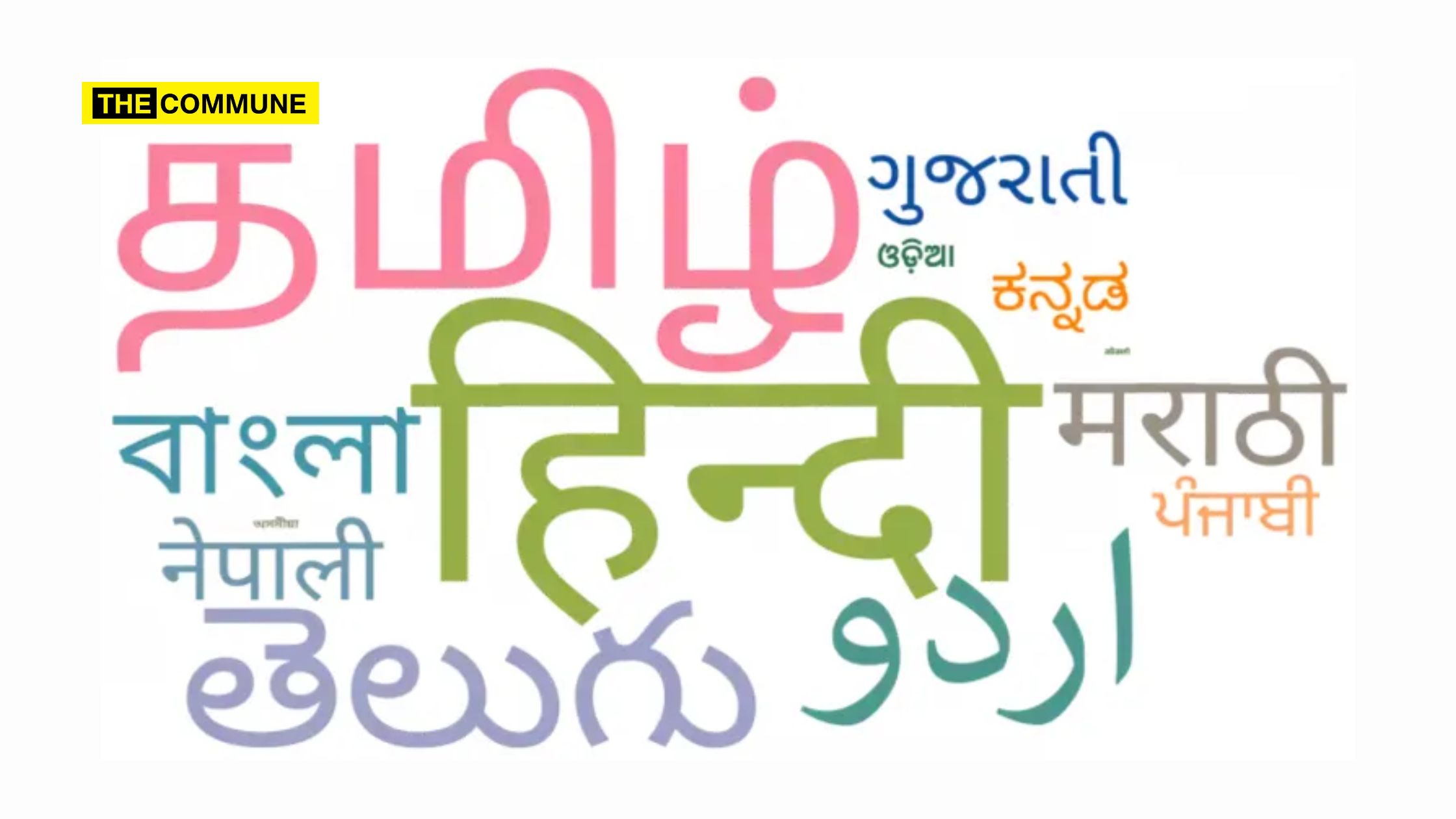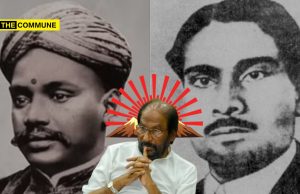
Prologue
We request our readers not to panic at the title even before start. We crave their indulgence to shed their prejudices, extricate themselves from the prevarications of pernicious politicians just for a few minutes, patiently go through the passage and at the end they are at perfect liberty to either concur with the caption or continue to carry a completely contrary conclusion, perhaps with greater conviction. Being conversant with the current contaminated scenario, we do not find fault even if they do not agree with the contents. On the other hand, we do not also guarantee that after going through this article, they will not change their mind and ask a counter question, ‘Why only four and not more?’ In this article we are going to analyse threadbare every aspect of our language formula as also the misconceptions about learning a language.
The Linguistic Richness Of Bharat
The ancient land of Bharat is a sui generic nation with lot of unique features, a kaleidoscopic spectacle of diversity that dazzles and baffles the world.
‘முப்பது கோடி முகமுடையாள் – உயிர் மொய்ம்புற வொன்றுடையாள் – இவள் செப்பு மொழி பதினெட்டுடையாள் – எனிற் சிந்தனை ஒன்றுடையாள்”
Mahakavi Bharati says: Bharatamata has thirty crores faces; still she has a single soul. She speaks in eighteen languages but the core of her thought is only one. [When Bharatiyar wrote this India’s population was around 30 crores. By the number 18, he indicates the major languages.]
Variety is the spice of life and in that aspect, our Bharat is the spiciest land on earth. Variety in religion, language, sects, food habits, topography, colour, culture, arts, fine arts, architecture, festivals, dynasty etc. Thus we, Bharatuyas, are proud of our variety in which language is also one. Each language carries with it the culture and values of each region. They are priceless treasures that our ancestors have bequeathed on us and such unique jewels only our nation proudly possesses. Prudence points to us that we nourish every one of them, thereby preserving and promoting our delectable diversity. The ancient name of India, ‘Rathna Garbha’ [repository of pearls] is not merely for the natural wealth alone but refers more to the gems of wisdom and scholarship easily available for all. Ample scope for learning many languages is one such exclusive gem.
Knowledge Of A Language: Interpretation
The basic misunderstanding starts at the beginning itself and that elemental error at the embryonic stage evolves itself into further excogitation of distressing and disturbing dimensions, casts away all cool, cordial and composed approach, enters into a domain of hysterical outbursts, after which there can be no room for discussion and deliberations, let alone concord and consensus.
What is meant by ‘knowledge’ of a language?
Let us take an example: It is an axiom that almost all the people of Tamil Nadu know the language Tamil. If we ask them, ‘Do you know Tamil?’ the answer invariably will be a definite ‘Yes’. They will retort with, ‘Why do you ask? Tamil is our mother tongue. We know it from our childhood.’ Therefore, we can say with confidence that more than ninety percent of people in Tamil Nadu know the language Tamil. But, if you ask anyone of them a few questions such as
குற்றியலுகரம் என்றால் என்ன? or ஈறுகெட்ட எதிர்மறைப் பெயரெச்சம் – எடுத்துக்காட்டு கூறு.
[These are all questions in Tamil grammar at the school level.]
they will not answer and instead will look at you in a weird fashion as if you are some abnormal person raising arcane questions. Forget such high level questions; If you enter a college in Tamil Nadu and ask an elementary question like ‘How many alphabets Tamil language has? Can you tell them in the correct sequence?’ each one will come out with different answer and almost all of them will be wrong. It is strange but true if you repeat such simple questions to those political leaders of Tamil Nadu who feign in all fora as if they are congenital champions of Tamil and vociferously forbid study of Hindi, they will also not fare any better at all.
Here we are confusing between two things: Erudition and expertise in a language is different from equipping oneself with an elementary knowledge for expressing with ease in that language. They are like chalk and cheese. By studying a language, therefore, we do not imply, ipso facto, producing in plenty any pedagogic pundits but are only enabling the tiny tot to comfortably negotiate in his future life, vocal transactions among different states and different sections in our nation. Is it a burden in the later life of the lad or is it factually a facilitating factor? We request our reader to deliberate deeply and dispassionately on this aspect.
Historical Perspective
There are a few dogged, dogmatic irrational imbeciles among us even now, who continue to harbour the idiotic idea that it was the British who created our nation as one singe state, India. Far from it. Our Bharat Varsha existed from time immemorial with different names like Rathna Garbha, Ajanabha Varsha, Aryavarta, Jambudwipa etc. People travelled from one corner to the opposite, crisscrossing the entire nation, with consummate ease, comfortably communicating with the common folk. Also, they need not bother about food and shelter which were freely available to them thanks to the tenets of our Sanatana Darma. It is a historical fact that Adi Shankara peregrinated from Kerala in the south to Kashmir in the north, discussed and debated with erudite scholars and established his doctrine of Advaita. For easy communication, local languages and link languages like Samskitam, Prakritam [Pali] were there and people were quite comfortable with all of them, since concord and consonance were the cardinal criteria of all Bharatvasis.
The Needless Fear Factor
Once, when the late C N Annadurai was told that one can easily learn Hindi in three months, he retorted with his customary wisecrack, ‘Yes, I agree. what is there to learn beyond three months in that language?’ Although his remarks were meant to be sarcastic, he has perforce admitted the truth that learning a language is not at all a difficult task.
For that matter, one can easily and effortlessly gain conversational skills in any language in just thirty days. It is like learning cycling or swimming. Initially, there will be hick-ups but later, once certain amount of fluency is acquired, it will be an enjoyable experience. Have we not noticed a kid, once he learns cycling or swimming, getting addicted to it and never leaves it?
Example Of Samskrita Bharati
Samskrita Bharati, an organisation that promotes use of simple Samskritam in everyday conversation asserts that thirty days are too much. ‘We can do it in just ten days’, they claim. And they actually do it!
For those who want a design to teach a language in the incredibly easiest method, Samskrita Bharati shows a unique way. It is nothing less than a magic! One need not have any prior knowledge of Samskritam. No proper textbook, no lessons, no writing, just listen, that is all. Listen just two hours a day for ten days. The classes are not a serious coaching sessions, but, indeed a lively avocation, quite an enjoyable evening, a playful pastime. At the end of the third day, you will be wondering at yourself! Yes, what has happened to you? You will yourself start speaking simple sentences in Samskritam. On the tenth day, you will be delivering a talk in Samskritam to your own friends in the group. Nothing less than magic!
Their modus operandi is down-to-earth practical, in consonance with human aptitudes. Listening first; speaking next; encouraging at every moment; no reading, no writing.
The reader need not take the above statements for granted. He is invited to test it himself. No fees. It is free for all. No restrictions whatsoever. What is expected of you is just two hours of active listening, or to be more precise, actively enjoying the time for ten days. Periodical courses are conducted throughout the country at every nook and corner, details of which are available in the net.
Those linguists who want to teach other languages can also learn from them the techniques and adopt them in spreading their own languages; it will be quite useful.
Unfortunately, one Bishop Robert Caldwell (1814 –1891) a missionary of London Missionary Society, who came to India with the single purpose of spreading Christianity, observed to his chargin that we, the entire Bharatiyas are a closely knit class in terms of culture, consanguinity, concordance and compatibility. He found that the language Samskritam played a powerful role in this. So, he ingeniously invented a new interpretation of the word, ‘Dravidian’ with the infernal intention of creating linguistically a wedge between the north and south and was unfortunately successful in his attempt. His toxiferous theory is still being continued by certain disruptive elements to isolate the south and create animosity against Samskritam. On the contrary, if we look at many of the famous literary works in Tamil, we will find that all those authors had exhibited deep knowledge of Samskritam in their works. Kambar had scrupulously scanned every verse Valmiki as could be seen in his Ramayana. Tiruvalluvar could not have written many verses without a deep understanding of Upanishads and other great works in Samskritam. Some of his kurals are verbatim translations of slokas in Samskritam. Of course, as the saying goes, great minds think alike.
The Stock Objection
The recalcitrant polemicist proceeds to his next protestation, proclaiming, ‘why should we be burdened with additional languages that are not ours?
This is sheer opportunism, a chameleon-like posture that cannot hold water. It is strange that the very same persons who come up with that objection are seen to possess knowledge of many languages which they had learnt for their professional progress. Readers would readily recognise those celebrities who mint millions with their own multilingual talents and, simultaneously spurred by sinister motives, voicing vociferously objection to others learning and misusing their popularity in misleading the masses. For instance, Kamal Haasan, who is quite vociferous in opposing Hindi, himself speaks Tamil, Malayalam, Kannada, Telugu, Hindi, Marathi, and English, reaping for himself boundless benefits of a polyglot.
Benefits Of Learning Many Languages
Let us, on the other hand, look at the benefits of knowing many languages.
Research indicates that people who speak more than one language develop a better memory, talent for problem-solving, ability to concentrate, and tendency to be creative than those who speak only one language. A well-known example is our former Prime Minister
P.V.Narasimha Rao, hailed as modern Chanakya, who brought lot of innovative sweeping reforms. He was a scholarly linguist and could speak as many as nine Indian languages [Telugu, Hindi, Oriya, Bengali, Gujarati, Kannada, Samskritam, Tamil and Urdu] and eight foreign languages [English, French, Arabic, Spanish, German, Greek, Latin and Persian]
Language is the easiest way to understand and appreciate the culture of a region. Children who study an additional language in addition to their mother tongue respect the culture associated with that language and exhibit empathy, affinity and warmth, which enhance their sociability to a wider circle.
Travelling becomes a pleasurable pastime, an enchanting experience, a joyous delight, since one can interact with lot of people, forge friendship and exchange pleasantries.
Other economic advantages like wider avenues for career developments, opportunities to participate in newer forums and contributing one’s skills worldwide etc. are obvious.
Conclusion
Opposition to learning many languages stems not from any genuine concern for the children but from a deeper malevolent motive of forging in the young mind psychological seclusion, since inability to express oneself with his counterpart in other states will detach one from the main stream of national activities. This will further breed hatred and hostility towards one’s own brethren in other states which feeling, if not nipped in the bud, will develop fissures in the nation’s camaraderie and result in ultimate fragmentation, the very plan and purpose of those anti-national forces.
Any situation can be viewed from different angles. Either the tumbler is half full or half empty. Both phrases represent a single fact. Life provides us either stepping stones or stumbling blocks. It depends on our approach. Ultimately if we think, ‘we can’, we can. The formula for happiness and success is after all, within us only.
It is the bounden duty of those dedicated to national unity, welfare and progress to counter the poisonous propaganda of the hostile elements, expose them in their true colours and sow seeds for a solid, strong stable nation with all the citizens identifying themselves as Bharatiyas and not with a lop-sided, limited loyalty based purely on language or region.
Parasuram Sharma is a retired bank officer and an octogenarian whose interests include Sanathana Dharmam, Samskritam, history and politics.




